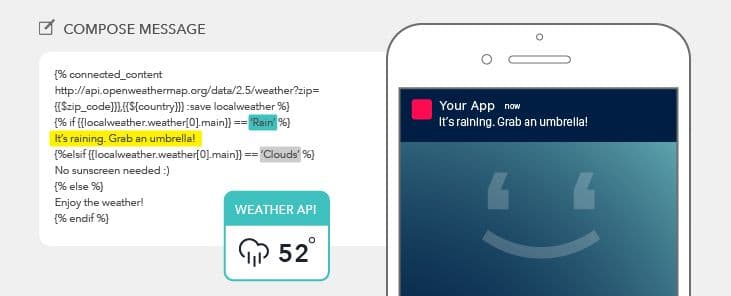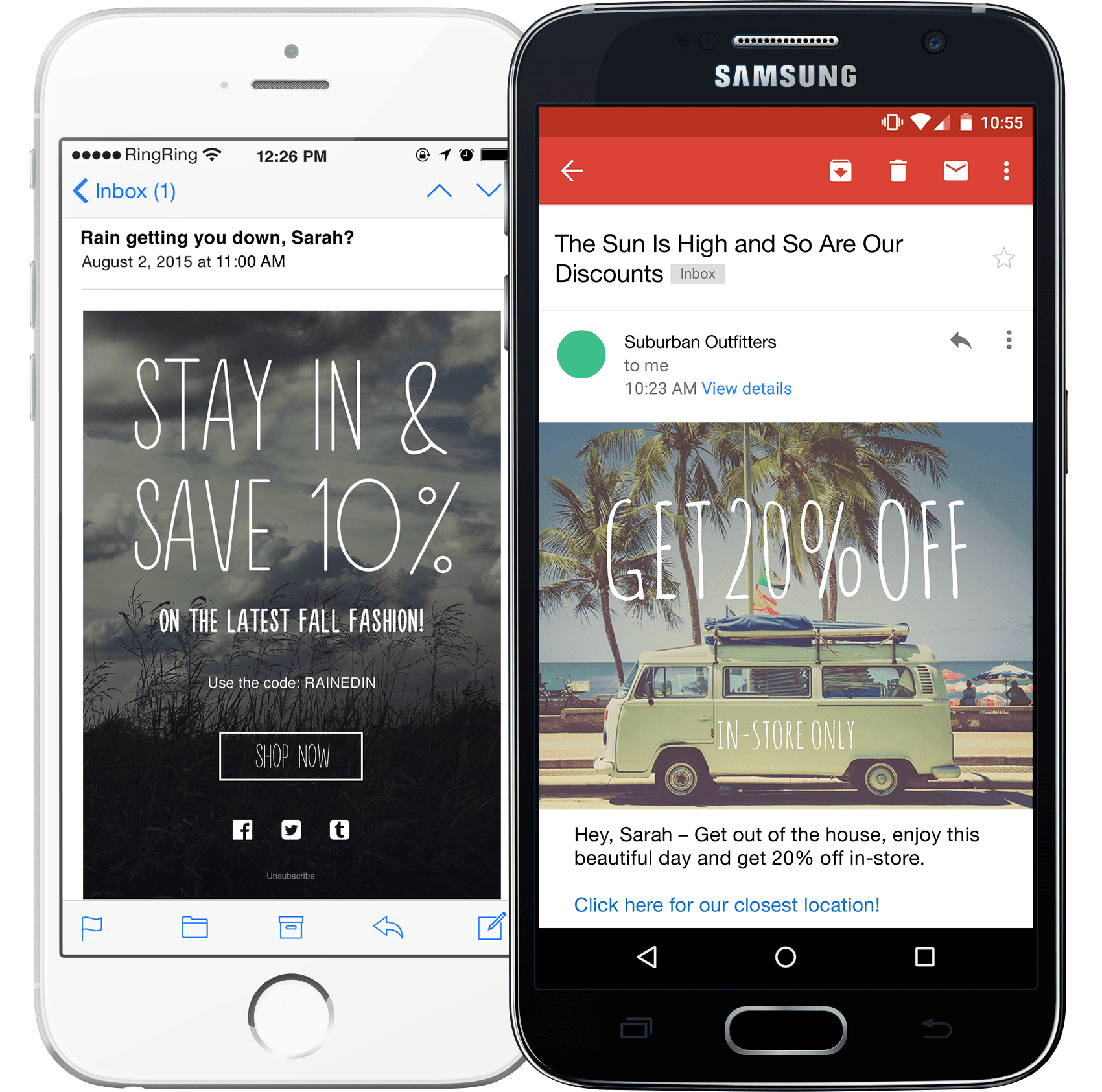Dynamic Content Is the Tool Your Real-Time Marketing Needs
Published on November 03, 2016/Last edited on November 03, 2016/5 min read


Todd Grennan
Content Production Principal, Content Marketing at BrazeFor marketers, the rise of mobile has reshaped what’s possible. Unlike traditional channels, which can reach customers only if they happen to come across your ad, mobile messaging channels can speak to users wherever they are: send a user a push notification and as long as they’re not asleep—and maybe even then!—you can get your message in front of them. That’s powerful, if you have the tools and strategy to capitalize on it. Dynamic content is one tool that maximizes the capabilities of mobile.
Let’s dive into why dynamic content makes a difference.
Right now, a lot of brands are embracing mobile messaging without adapting their outreach to take advantage of these channels’ innate strengths. If you’re using these powerful, nuanced customer messaging tools to send generic, one-size-fits-all outreach, that’s a big missed opportunity. Even worse, it could lead customers to tune out your brand: 78% of people who receive push notifications they’re unhappy with will opt out of push or even uninstall the app.
One of the best ways to send outreach that recipients find relevant and valuable is message personalization. Personalizing messages individually customizes the push notifications, emails, and other messages you send. That can mean adding in the recipient’s name, customizing messages based on their in-app or on-site behavior, or adjusting copy based on their location or native language.But if you’re ready to take your message personalization to the next level, it’s time to start thinking about using dynamic content.
What is dynamic content?
In essence, dynamic content is continuously updated information—copy, images, and more—that can be inserted into push notifications, emails, in-app messages, or News Feed Cards, in order to provide customers with a more responsive, relevant messaging experience.
How does dynamic content work?
Think about it this way: when you’re personalizing a messaging campaign by including user first names, what you’re doing is pulling information held by your marketing platform (each recipient’s first name) and automatically adding it into each message that’s sent. A message that uses dynamic content works the same way, except that the information you’re including is taken from an API, rather than from your marketing platform’s collection of user profiles. Because the message will pull the information from the chosen API right as the message is sent, using dynamic content makes it possible to keep the information you’re including in messages as up to date and relevant as possible.
What sorts of information can dynamic content leverage?
The flexible nature of dynamic content makes it possible to pull in a wide variety of information and content—including text and images—into messages, and to draw that information either from your company’s own proprietary servers or from public APIs providing continually updated data. So, for instance, you could use dynamic content to send a push notification that adjusts its copy based on weather conditions for each recipient, courtesy of the OpenWeatherMap API, or pull in logos and other product information into an email using your company’s in-house APIs.

Using Appboy’s Connected Content (dynamic content) to deliver different message variants based on weather conditions
What are the benefits of using dynamic content?
While different brands will likely use dynamic content in different ways, there are a couple big benefits to taking advantage of this tool.
First, research conducted by Appboy has found that when marketers use tools like dynamic content to personalize the messages they send to customers, they see a more than 27% increase in related conversions, compared to messages without personalization. That represents a major opportunity to drive more users to your app or site, encourage deeper engagement, and convince more of your customers to make a purchase or sign up for a subscription.

Emails personalized with local weather data using dynamic content
Second, using dynamic content can be a powerful way to make the messaging experience better and more relevant for the people receiving it. Dynamic content is fundamentally of-the-moment, making outreach feel responsive and timely: if, for instance, you send a push notification with weather-focused dynamic content to a customer in Brooklyn while it’s raining at 9 a.m. and another one to a customer in the same neighborhood when it’s sunny at 10:30 a.m., each customer will receive a message with content that matches what’s happening when they receive it. That makes it possible to really take advantage of mobile’s potential for smart, real-time customer/brand communication, supporting higher revenue and stronger relationships with your users.
Anything else?
As with any kind of personalization, marketers shouldn’t go all in until they’re confident that including it in their messages provides recipients with a better, more engaging experience and drives stronger marketing results. That means using multivariate testing to make sure you’re sending the best version of each message and keeping a close eye on campaign analytics to ensure that your use of dynamic content is helping to move the needle.
But don’t stress if it takes a few attempts to get the full benefit of dynamic content—in today’s mobile-first world, marketing is all about iterating and testing and iterating again.
Related Tags
Be Absolutely Engaging.™
Sign up for regular updates from Braze.
Related Content
View the Blog
A day in the life of a data scientist on the BrazeAIᵀᴹ forward-deployed engineering team

McKay Jensen

The new inbox reality: How iOS changes are reshaping email marketing

Aparna Prasad

Experience optimization: Turning data insights into better journeys
